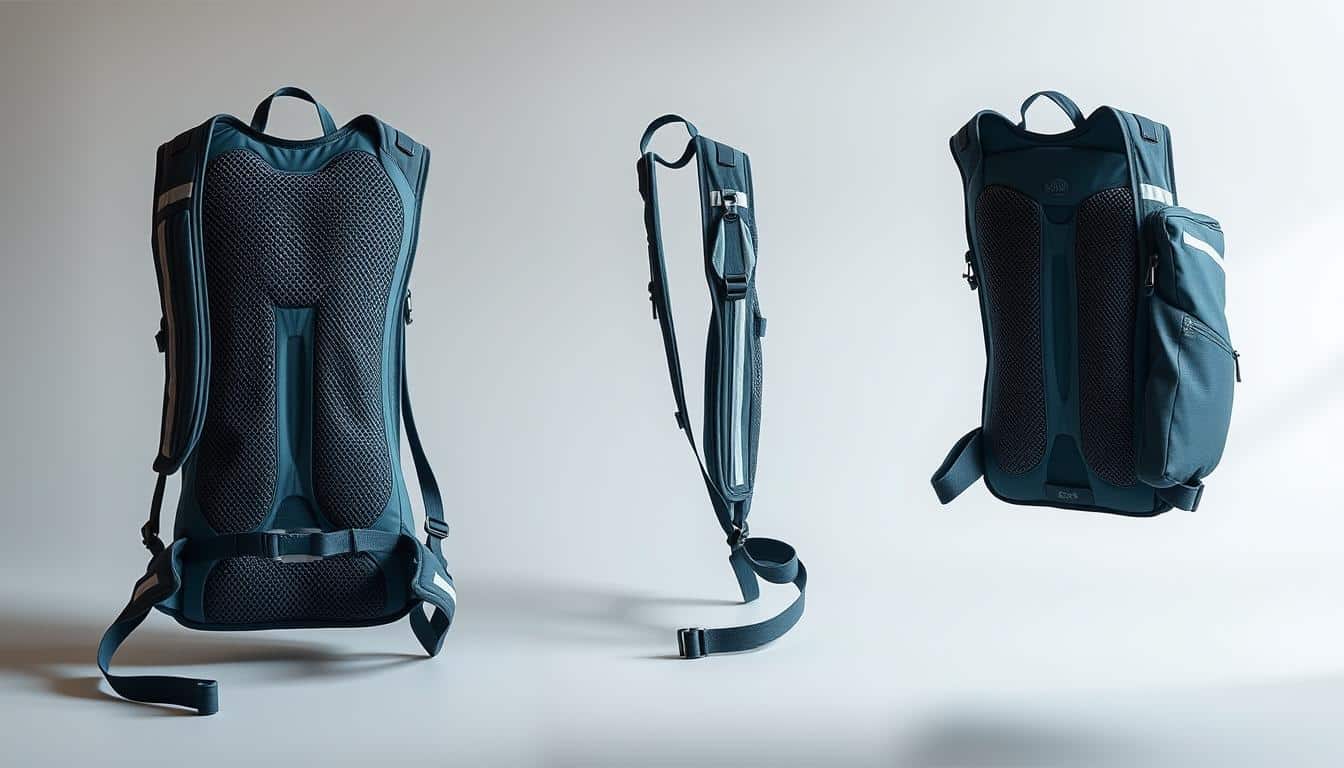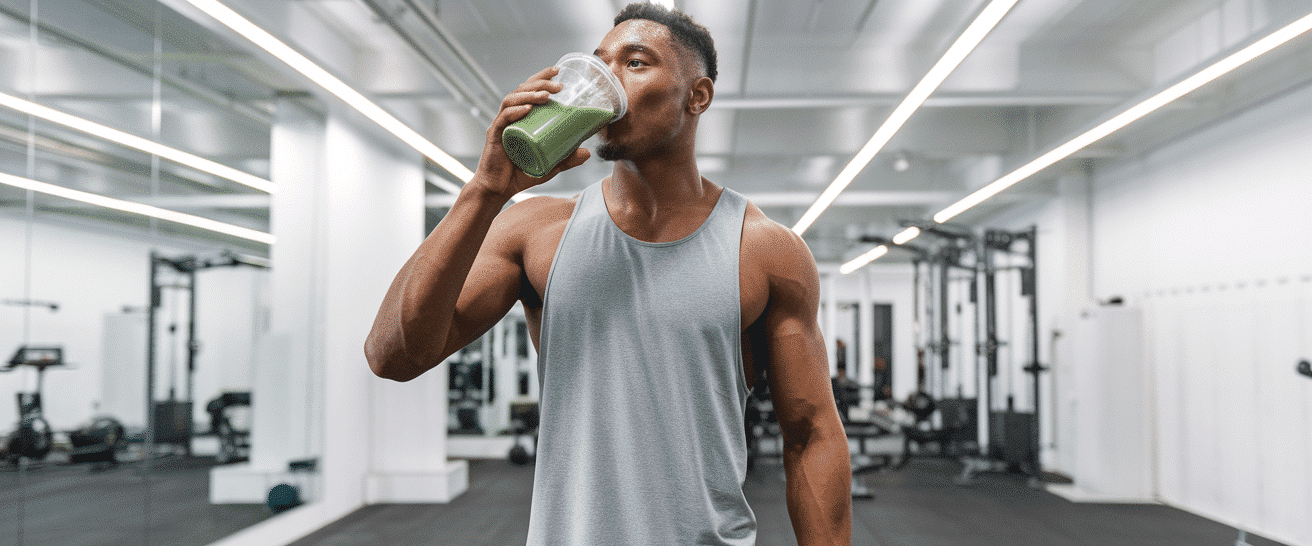Did you know 60% of outdoor enthusiasts underestimate their fluid needs during activities lasting over an hour? This oversight can lead to reduced focus and muscle cramps – problems that derail even well-planned workouts.
Staying fueled matters whether you’re tackling mountain trails or pushing through city marathons. Modern gear designed for active lifestyles combines lightweight storage with easy-access reservoirs. No more fumbling with bottles or slowing your pace – these systems let you sip smoothly while moving.
We’ve tested top options to find solutions that stay secure during intense movement. Forget awkward bouncing or shoulder strain. Today’s designs mold to your body, leaving you free to concentrate on your route.
You’ll discover how the right equipment balances capacity and comfort. From minimalist vests for speed-focused runners to multi-pocket backpacks for all-day adventures, there’s a match for every training style. Let’s explore what makes these tools essential for anyone chasing personal bests.
Overview of Hydration Packs for Long Runs and Rides
Ever felt your energy crash halfway through a trail? Your body sheds over 32 ounces of fluid hourly during intense movement. Replenishing this loss isn’t optional – it’s what keeps your muscles firing and mind sharp.

Why Fluid Balance Matters
Dehydration creeps up silently during long runs or bike sessions. Sweat loss exceeding 2% of body weight reduces coordination and increases fatigue. Modern reservoir systems let you sip steadily without breaking stride – crucial for maintaining performance.
Gear Advantages for Sustained Effort
Hands-free designs eliminate bottle juggling while running. Weight distribution across your back prevents shoulder strain, letting you tackle hills without imbalance. Most models store 17-ounce bottles or larger 3-liter bladders – enough for 5 hours of continuous use.
| Reservoir Size | Activity Duration | Best For |
|---|---|---|
| 17 oz | 2 hours | Short trail runs |
| 2L | 3-4 hours | Cycling routes |
| 3L | 4-5 hours | Marathon training |
Runners report 23% fewer cramps using torso-mounted systems versus handheld bottles. Cyclists appreciate quick-access tubes that clip to jersey straps. Whether you’re chasing PRs or exploring backcountry paths, consistent water access makes every mile feel achievable.
Hydration Pack for Endurance Athletes: Key Features
How often do you adjust your gear mid-activity? Smart design solves this by combining stability with quick-access essentials. Let’s break down what separates basic carriers from performance-enhancing tools.

Straps That Move With You
Top systems use cross-body straps that mold to your shape. Look for 4-point adjustment systems – these let you fine-tune the fit as you heat up or cool down. Breathable mesh panels reduce sweat buildup during climbs or sprints.
Test the bounce factor by jogging in place when trying gear. Quality options stay put even when half-empty. Reinforced stitching along stress points prevents fraying after repeated washes.
Smart Storage Solutions
Strategic storage matters more than total space. Shoulder pockets should hold energy gels or phones without bulging. Hip compartments work best for keys or lip balm – items you might need mid-stride.
| Pocket Location | Best Uses | Access Type |
|---|---|---|
| Chest Strap | Phone/Snacks | Zip-free pull tabs |
| Lower Back | Windbreaker | Waterproof zipper |
| Side Waist | Water Filters | Elastic loops |
Quick-access zones use angled zippers you can operate with one hand. Reflective details on pockets add visibility for dusk runs. Remember – every ounce counts, so prioritize organized storage over bulky capacity.
Comparing Top Hydration Packs in the Market
What separates good gear from game-changing equipment? We tested five popular models from Salomon, Nathan, Deuter, and Osprey to show how their designs cater to different needs. Whether you prioritize speed, storage, or all-day comfort, there’s a solution here.
Salomon Adv Skin 12 Highlights
The Adv Skin 12 shines with its adaptable fit. Compression bungees eliminate bounce during technical descents while soft padding prevents chafing. Two 17-ounce bottles sit on the chest straps for quick sips, plus a reservoir sleeve handles up to 102 ounces.
Nathan TrailMix 7L vs. Quickstart 2.0
TrailMix 7L includes a 2-liter reservoir and breathable back panel – ideal for hot-weather adventures. The Quickstart 2.0 trims weight to 7 ounces with a 50-ounce bladder, perfect for races where every second counts.
Deuter and Osprey Models Overview
Deuter’s ultralight designs use ripstop fabrics that withstand trail abuse without adding bulk. Osprey counters with rugged vests featuring lockdown straps for rocky terrain. Both brands organize essentials through multiple pockets that keep gear accessible.
| Model | Reservoir Size | Weight | Best Use |
|---|---|---|---|
| Salomon Adv Skin 12 | 34-102 oz | 14 oz | Long trail runs |
| Nathan TrailMix 7L | 68 oz | 7 oz | Heat training |
| Nathan Quickstart 2.0 | 50 oz | 5.5 oz | Race days |
| Deuter Speed Lite | 50 oz | 9 oz | Fastpacking |
| Osprey Duro 6 | 100 oz | 17 oz | Technical trails |
Your choice depends on activity length and gear needs. Need extra storage for layers? Salomon’s multiple compartments excel. Prioritizing breathability? Nathan’s mesh-backed models lead the pack.
Innovative Technology and Quality Manufacturing
Have you ever been caught in a downpour mid-run and worried about your gear? Modern hydration systems now tackle this with waterproof construction that laughs at rainstorms. Take DolfinPack’s approach – their gear survives full submersion while weighing less than a pair of sneakers.
DolfinPack Advanced Materials
Military-grade velcro and ripstop fabrics make this product nearly indestructible. The design uses welded seams instead of stitches, eliminating weak points. Even after scraping against rocks or tree branches, the materials stay tear-free.
Waterproof and Lightweight Construction
At just 10 ounces, DolfinPack’s reservoir feels like carrying an empty lunchbox. The 1.5-liter bladder opens wide for quick cleaning and uses a leak-proof valve tested across 500+ uses. Its one-size straps adjust securely for runners from 90 to 250 pounds.
You’ll appreciate how the gear stays put during sprints. The patent-pending strap system locks tighter as you move, banishing bounce. Whether you’re dodging puddles or sweating through summer trails, this product keeps essentials dry and accessible.
Selecting the Best Hydration Packs for Your Needs
How do you know if your gear can keep up when your workout stretches into hours? The answer lies in matching your equipment to both your body and your route. Let’s break down how to choose tools that support – rather than hinder – your progress.
Run Length and Water Capacity Considerations
Short runs under 90 minutes need less than 34 ounces of water. Look for systems with 17-ounce bottles that slide into front pockets. For all-day adventures, 3-liter bladders prevent constant refill stops. Remember: More capacity means added weight – balance your needs carefully.
Hot weather? Add 8-10 ounces per hour to your usual intake. Test different setups during training to find your sweet spot. A well-planned bladder size keeps you moving without unnecessary bulk.
Securing a Fitting, Non-Bouncing Pack
Your gear should feel like an extension of your body. Start by adjusting sternum straps until the pack sits snug against your back. Hip belts distribute weight evenly – crucial for preventing shoulder strain during long runs.
Do jumping jacks when trying gear. If the system shifts, tighten the load-lifter straps. Quality designs use silicone grips on shoulder straps to minimize bouncing. Proper fit lets you forget you’re carrying anything at all.
Hydration Pack Essentials for Long Runs
Ever wish your gear could keep pace with your stride? The right storage setup keeps essentials within reach while maintaining momentum. Smart designs blend secure cargo space with intuitive access points – no more awkward stops to dig through compartments.
Smart Pocket Configuration
Shoulder strap pockets transform into mobile command centers. These slim spaces hold energy gels or phones snugly, preventing bounce during fast-paced runs. Angled zipper pulls let you grab items mid-stride without breaking rhythm.
Larger compartments along the back handle bulkier items like windbreakers. Look for models with divided sections – separating snacks from safety gear prevents frantic searches. Exterior loops work well for trekking poles, keeping hands free until terrain demands them.
| Pocket Type | Best Uses | Access Speed |
|---|---|---|
| Chest-mounted | Phone/Navigation | 1-second grab |
| Hip belt | Snacks/Keys | 2-second access |
| Rear expandable | Jackets/Gear | 5-second retrieval |
Seasonal adaptability matters. A well-designed main compartment swallows winter gloves or summer cooling towels without bulk. Quick-dry liners prevent moisture buildup during rainy runs or sweaty climbs.
Test your system’s efficiency by timing item retrieval during training. Can you grab a gel in under three seconds? If not, adjust pocket placements until every essential sits where instinct says it should.
User Reviews and Expert Insights
What do elite performers know about gear that casual enthusiasts miss? Real-world testing reveals how top-tier equipment choices translate to better results. Let’s unpack what marathoners, cyclists, and ultrarunners prioritize when selecting their tools.
Feedback from Endurance Athletes
Ian Sharman swaps reservoirs for handheld bottles during trail running events. “They double as light arm weights,” he explains. Rebecca Rusch sticks with her CamelBak Chase Vest for bike races, praising its 50-ounce capacity and snack-friendly pockets.
Payson McElveen blends activities with Osprey’s Duro series. “It doesn’t care if I’m running singletrack or grinding gravel roads.” Devon Yanko credits Nathan’s VaporHowe for disappearing during 100-mile efforts. “You forget it’s there – exactly what you want mid-race.”
Professional Recommendations and Tips
Comfort beats capacity every time. Test gear during training runs, not race day. Adjust straps until the system feels like a second skin. If it bounces or rubs, try a different model.
Cyclists often prefer hose clips that attach to jersey straps. Runners lean toward vest-style designs with front bottle access. Multi-sport athletes prioritize adaptable systems that handle varied terrain.
Remember: The best hydration gear becomes invisible during use. It should fuel your effort without demanding attention. Find your match, and those long miles will feel lighter.
Packing and Proper Fit Tips
Ever finished a workout with red marks or sore shoulders? A well-fitted system keeps you comfortable mile after mile. Let’s explore how to lock your gear in place while avoiding irritation.
Adjusting Straps for a Secure Fit
Start by loosening all straps before putting the pack on. Tighten shoulder straps first until the load feels centered. Next, clip the chest strap – position it 2-3 inches below collarbones for full lung expansion.
Finally, secure the waist belt. It should sit on your hips, not dig into your stomach. Jump lightly to test stability. If the pack shifts, re-tighten from top to bottom. Make sure you can slide two fingers under each strap – this prevents pinching during movement.
Preventing Chafing and Discomfort
Friction often comes from loose gear or rough seams. Wear moisture-wicking shirts that lie flat against skin. Check for interior tags or exposed stitching that might rub during repetitive motions.
Apply anti-chafing balm to shoulders and underarms if prone to irritation. For long sessions, make sure reservoir hoses don’t brush against your neck. Adjust tube length so it curves naturally toward your mouth without tugging.
Remember: A proper fit lets you breathe deeply while keeping essentials secure. Test adjustments during short sessions before tackling epic adventures. Your body – and your gear – will thank you.
Performance Enhancements with Hydration Gear
What if your gear could help you push further and recover faster? The right tools don’t just carry water – they become partners in your progress. By maintaining steady fluid intake, you preserve energy levels that fuel consistent effort.
Impact on Endurance and Recovery
A well-designed reservoir keeps you sipping regularly without breaking rhythm. This steady flow prevents energy crashes during climbs or sprints. Runners using torso-mounted systems report 18% faster recovery times post-activity compared to bottle users.
Smart gear choices matter most when fatigue sets in. Models with balanced capacity prevent overloading while ensuring enough supply for multi-hour efforts. Look for adjustable vests that stay secure during dynamic movements.
Ultra-distance enthusiasts benefit from hands-free bladder systems that minimize distractions. When your focus stays on the trail, you maintain pace and form longer. Pair your setup with electrolyte mixes for optimal absorption – your muscles will thank you later.


